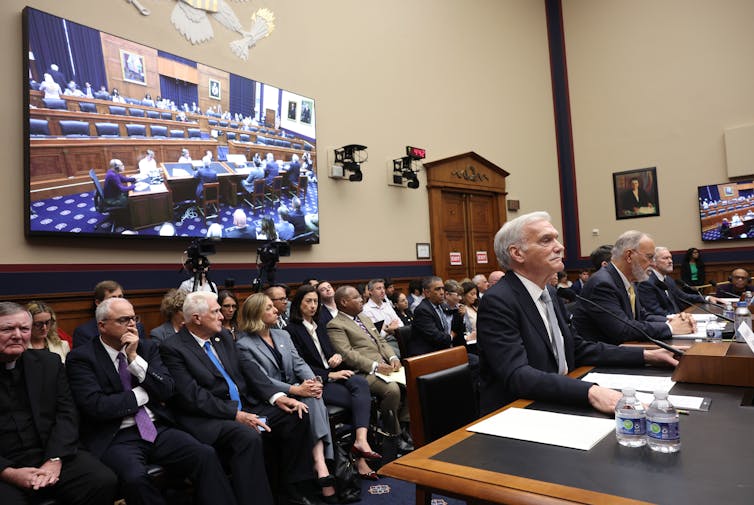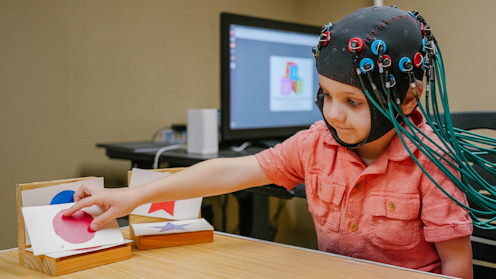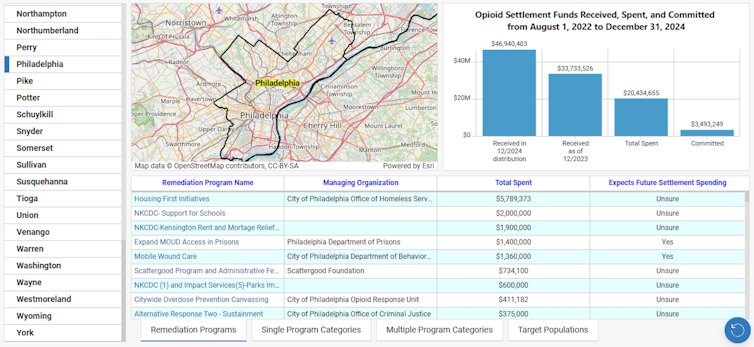Source: The Conversation – USA – By Julia R. Azari, Assistant Professor of Political Science, Marquette University

In a classic work on the modern presidency originally published in 1960, political scientist Richard Neustadt wrote that the American public “expects the man in the White House to do something about everything.”
These expectations, Neustadt argued, far exceeded the president’s ability to actually control outcomes.
More recently, political journalist John Dickerson, author of “The Hardest Job in the World,” noted that presidents typically have people demanding that they pay attention to about 250 problems at one time. But, quoting a productivity expert, Dickerson points out that priorities are like arms: “If you have more than two, you’re either crazy or lying.” The implication: Presidents have to shed 248 of those pressing concerns.
I study the American presidency. The research in the field, including my own, suggests that typically the politics of presidential attention is driven by two considerations.
The first comes down to delegation: As Barack Obama was fond of saying, no easy problem gets to the president’s desk. Presidents typically focus on the problems that no one else – not state or local governments, the bureaucracy or Cabinet secretaries – can deal with.
The other consideration is whether the issue is a winning one. Neustadt emphasizes this in his study of presidential power: Presidents enhance their reputations by winning conflicts, not losing them.
There are also plenty of examples of presidents wading into highly conflicted areas and alienating supporters or suffering policy defeats, including George W. Bush’s unsuccessful attempts to tackle the “third rail” of Social Security reform, and Bill Clinton’s failed efforts to enact health care reform.
As a result, presidents are typically expected to be focused on national security, economic management and other key issues that have to be handled at the national level. They are expected to only sparingly wage battles of will with leaders outside government – in the arts, business or education – and with state-level politicians who lie outside the president’s direct control.
Amid the many other ways he’s departed from American political tradition, President Donald Trump has turned these assumptions upside down. That has important implications for how Americans understand the scope and reach of presidential power.
Like most aspects of American politics, the presidency has become more defined by partisan politics over time. Trump has taken this evolution to a new level, rejecting the traditional role of statesman or a spokesperson for the whole nation.
Instead, he has adopted the role of partisan political warrior – and that means he is using the power of his office in areas and in ways previously considered off-limits to the president.

Tim Sloan/AFP-Getty Images
Hosting, decorating and critiquing clothing ads
Recently, President Trump reported that he might host the Kennedy Center Honors in December. He also reportedly had a strong hand in choosing the center’s honorees, a task normally undertaken over months and with public input.
He’s also been heavily involved in the redecoration of the White House, waged war on wind turbines and posted online about the controversy over actress Sydney Sweeney’s ad for American Eagle jeans.
His administration has issued detailed demands of numerous universities, wading directly into curriculum, personnel policies and the frequent target of diversity, equity and inclusion programs. While much of this effort has gone through the Department of Education, the president himself has issued executive orders and posted online about specific universities.

Truth Social/@realDonaldTrump
Traditionally, presidents have been especially hesitant to dive into areas where education intersected with difficult cultural conflicts. One of the most significant examples is the way that presidents reacted, from the 1950s through the 1970s, to Supreme Court orders mandating school desegregation.
To put it bluntly, presidents did not want to face the political dilemmas associated with enforcing the court’s 1954 Brown v. Board of Education decision.
As I note in my book “Backlash Presidents,” presidents are rarely eager to upend the racial status quo, even when they recognize its injustice.
Dwight Eisenhower, who was president when the Supreme Court issued the Brown decision, felt the decision placed new strain on the federal government to get involved in social relations and local issues. The feeling was bipartisan; Eisenhower’s presidential successor, Democrat John F. Kennedy, didn’t want to take a lead role in enforcing desegregation either.
Both, at different times, did eventually use federal force and power to uphold the law. Eisenhower mobilized the National Guard to protect Black students integrating a Little Rock, Arkansas, high school in 1957, and Kennedy in 1963 took similar action to protect Black students integrating schools in Alabama.
But federalism, which divides powers between national and state government, provided presidents with a strategically useful barrier to any further presidential action, allowing the two presidents to say that they were treading carefully because education was up to the states.
Obviously, this was a different time and context – the Department of Education didn’t exist yet, so there was not a clearly defined federal role in public education. But it represents an example of how presidents have typically looked to use structures such as federalism to leave tough issues to others and avoid political fallout.
It’s personal with Trump
Focusing attention on foreign policy and national security is less likely to stoke opposition. Those are areas where presidents have more latitude and can expand their power even more.
Presidents have traditionally not engaged in direct conflict with individual governors, industry leaders or university presidents if they can help it. They’ve engaged in policy battles, but generally not personal ones.
Trump’s approach has been very different.
With Department of Justice investigations and public criticism, his administration has targeted specific law firms and individuals whom Trump dislikes. The president has issued executive orders about the “forced use” of paper straws.
Is Trump’s attention on the personal a problem for the nation?
Presidents have been challenged for being too focused on minor issues and details, including Jimmy Carter, whose attention to things such as the schedule of the White House tennis courts drew scorn from critics.
Some presidents have been criticized as too quick to delegate to others, as was Ronald Reagan, who was seen as inattentive to important details. George W. Bush likewise was knocked for delegating too much, especially in crucial areas of foreign policy and intelligence.
Diving deeply into partisan politics
But Trump’s shifting of presidential priorities signals a much deeper political change.
First, some of these actions have also been directly related to cultural conflict – the fights with universities over DEI polices, commenting on the Sydney Sweeney ad.
Trump is hardly the first president to elevate a hot-button cultural issue for political gain – George W. Bush famously promoted a constitutional amendment banning same-sex marriage leading into his 2004 reelection campaign.
But presidents have traditionally seen more costs than benefits associated with campus speech issues or race questions that could be handled elsewhere.
A February 2025 article in The Root, whose motto is “Black News and Black Views with a Whole Lotta Attitude,” points to “five ridiculously petty actions” from the administration. All are related to race or LGBTQ symbols or visuals, such as the removal of references to LGBTQ Americans from government websites and the removal of a Spanish-language version of the White House website.
Another related aspect of the logic behind this shift in presidential attention is that the political constraints that limited past administrations, such as fear of alienating voters or stirring controversy, do not seem to concern this one. It suggests that the president and his team are not worried about the opinions of people who might disagree with their cultural stances.
This change also represents a departure from the more traditional statesmanship version of the presidency. The Trump administration and the president who heads it have chosen to dive deeply into, rather than rise above, politics.
![]()
Julia R. Azari has received (in the past) funding from the Truman Library Institute, the Kluge Center at the Library of Congress and the William and Flora Hewlett Foundation.
– ref. The president as partisan warrior: Trump’s rejection of traditional presidential statesmanship – https://theconversation.com/the-president-as-partisan-warrior-trumps-rejection-of-traditional-presidential-statesmanship-262867






















